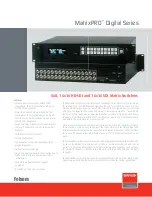
y = 1-digit TAT number
Set the CALL TYPE field to
101TAT
.
27.
Insert a LOCAL DIGIT (OFFICE DIALING) form instance for the directory number for the RMS-D3 NNX104
test line. Set the CALL TYPE field to
104R
.
28.
Insert a LOCAL DIGIT (OFFICE DIALING) form instance for the directory number for the RMS-D3 NNX105
test line. Set the CALL TYPE field to
105R
.
29.
Insert a LOCAL DIGIT (OFFICE DIALING) form instance for the directory number for the RMS-D3 NNX109
test line. Set the CALL TYPE field to
109R
.
30.
Insert a LOCAL DIGIT (OFFICE DIALING) form instance for the directory number for the RMS-D3 NNX606
test line. Set the CALL TYPE field to
606R
.
31.
If problems occur, back out using
RMV: . . .
commands for the above
RST: . . .
commands and removing the
LOCAL DIGIT (OFFICE DIALING) form instances.
NOTE:
The RMS-D3 feature is enabled with the following steps. The feature is controlled by the RMSOPT
field in the OFFICE PARAMETERS (MISCELLANEOUS) RC/V form. Setting the RMSOPT field to
``Y'' equips the feature; ``N'' unequips the feature.
32.
Using the ODA RC/V tool, bring up the OFFICE PARAMETERS (MISCELLANEOUS) form. Set the RMSOPT
field to
Y
(equipped).
33.
Activate the RMS-D3 link handlers and control processes:
At MCC, enter message:
INIT:ULARP
34.
Verify that the control process (TMrmsrd1 and TMrmswr1) are executing by checking the ROP printout:
Response:
REPT ULARPLOG ATTEMPTING TO RESTART TMRMSRD1
process_no
REPT ULARPLOG ATTEMPTING TO RESTART TMRMSWR1
process_no
The RMS-D3 data link is now operational from the RMS-D3 system controller. The RMS-D3 TATs are now
operational to originate calls and terminate test calls if the incoming calls use the special test DN=NNX10x,
NNX606 numbers. Incoming ``10x'' calls are still being routed to the TLWS. Particular tests will be conducted
during regression testing to confirm this status.
If problems occur, the equipage flag ``RMSOPT'' can be set to ``N'' to unequip the feature.
35.
STOP. YOU HAVE COMPLETED THIS PROCEDURE.
235-105-210
October 1999
Copyright © 1999
Page 4
Summary of Contents for 5ESS-2000
Page 96: ...235 105 210 October 1999 Copyright 1999 Page 2 ...
Page 184: ...235 105 210 October 1999 Copyright 1999 Page 3 ...
Page 300: ...13 STOP YOU HAVE COMPLETED THIS PROCEDURE 235 105 210 October 1999 Copyright 1999 Page 55 ...
Page 339: ...7 STOP YOU HAVE COMPLETED THIS PROCEDURE 235 105 210 October 1999 Copyright 1999 Page 13 ...
Page 342: ...235 105 210 October 1999 Copyright 1999 Page 2 ...
Page 359: ...235 105 210 October 1999 Copyright 1999 Page 5 ...
Page 609: ...2 STOP YOU HAVE COMPLETED THIS PROCEDURE 235 105 210 October 1999 Copyright 1999 Page 12 ...
Page 676: ...235 105 210 October 1999 Copyright 1999 Page 9 ...
Page 792: ...3 STOP YOU HAVE COMPLETED THIS PROCEDURE 235 105 210 October 1999 Copyright 1999 Page 9 ...
Page 799: ...Figure 11 36 3 1 Cleaning Points 235 105 210 October 1999 Copyright 1999 Page 7 ...
Page 801: ...235 105 210 October 1999 Copyright 1999 Page 9 ...
Page 839: ...2 STOP YOU HAVE COMPLETED THIS PROCEDURE 235 105 210 October 1999 Copyright 1999 Page 16 ...
Page 999: ...2 STOP YOU HAVE COMPLETED THIS PROCEDURE 235 105 210 October 1999 Copyright 1999 Page 13 ...
Page 1008: ...Figure 11 55 1 CTSNS DIP Switch Settings 235 105 210 October 1999 Copyright 1999 Page 2 ...
Page 1011: ...235 105 210 October 1999 Copyright 1999 Page 5 ...
Page 1053: ...235 105 210 October 1999 Copyright 1999 Page 15 ...
Page 1289: ...Figure 15 17 2 AMATPS Data Link 235 105 210 October 1999 Copyright 1999 Page 2 ...
Page 1292: ...235 105 210 October 1999 Copyright 1999 Page 5 ...
Page 1303: ...9 STOP YOU HAVE COMPLETED THIS PROCEDURE 235 105 210 October 1999 Copyright 1999 Page 2 ...
Page 1360: ...Figure 15 47 2 Typical SCANS III Link Diagram 235 105 210 October 1999 Copyright 1999 Page 2 ...
Page 1372: ...235 105 210 October 1999 Copyright 1999 Page 2 ...
Page 1374: ...235 105 210 October 1999 Copyright 1999 Page 4 ...
Page 1421: ...Table 1 1 O M Checklist 235 105 210 October 1999 Copyright 1999 Page 3 ...















































